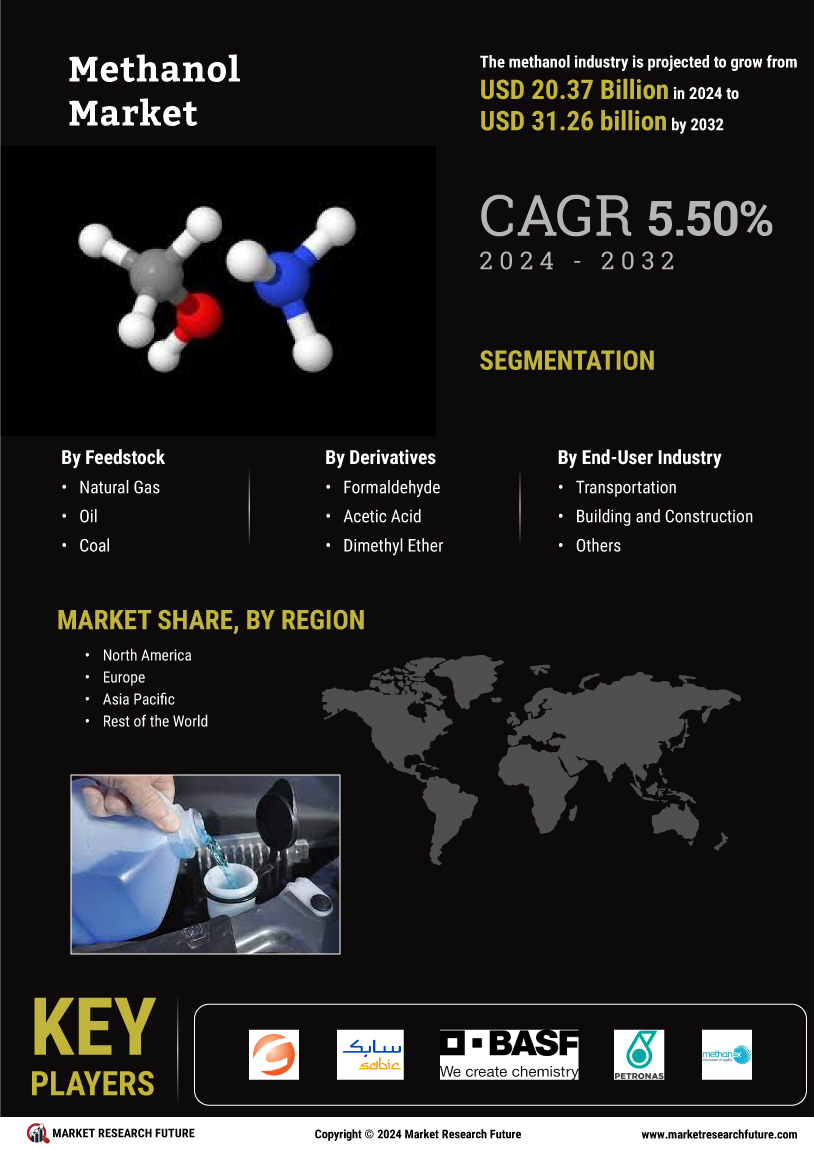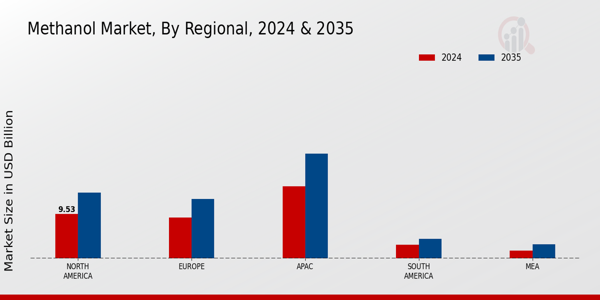Methanol Market Summary
As per Market Research Future Analysis, the Global Methanol Market is projected to grow from 20.37 USD Billion in 2024 to 36.72 USD Billion by 2035, with a CAGR of 5.50% from 2025 to 2035. The market is driven by increasing demand for cleaner energy solutions, particularly in transportation and energy sectors, alongside significant growth in the chemical manufacturing sector. The adoption of methanol as a feedstock for various chemicals and its application in sustainable energy solutions are key growth factors.
Key Market Trends & Highlights
The Global Methanol Market is witnessing transformative trends that enhance its growth potential.
- Methanol Market Size in 2024: 20.37 USD Billion.
- Fuel application projected to reach 36.72 USD Billion by 2035.
- Chemical Feedstock application expected to grow to 15.5 USD Billion by 2035.
- North America market size forecast for 2035: 14.08 USD Billion.
Market Size & Forecast
| 2024 Market Size | USD 20.37 Billion |
| 2035 Market Size | USD 36.72 Billion |
| CAGR (2025-2035) | 5.50% |
Major Players
Key players include China National Chemical Corporation, Qatar Petroleum, SABIC, Yara International, and Methanex.



















